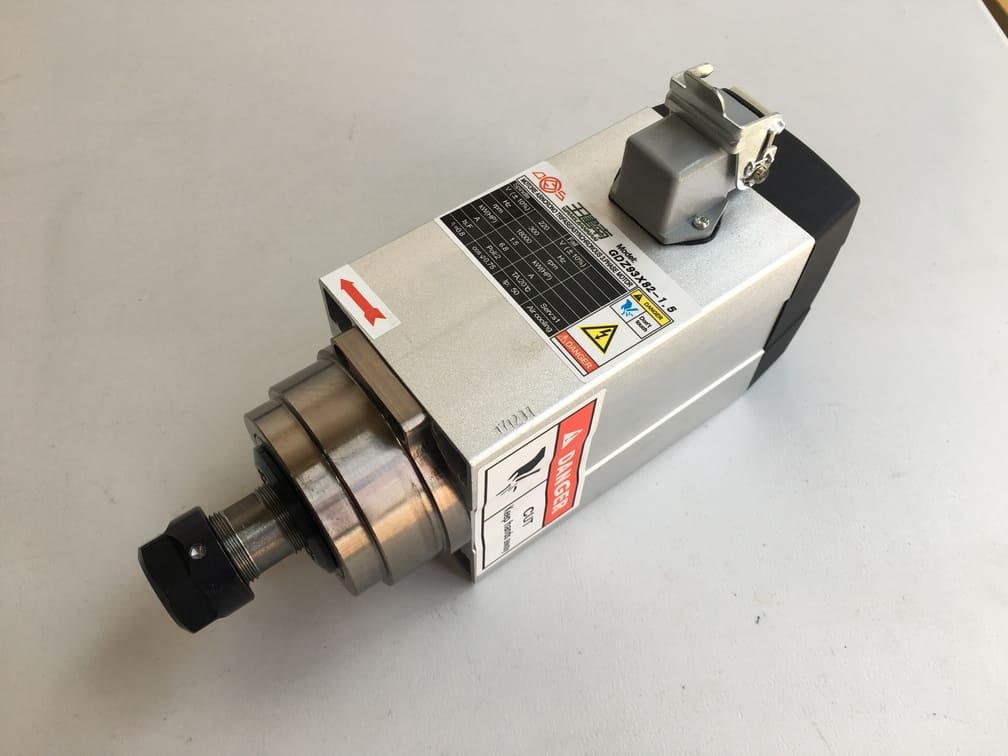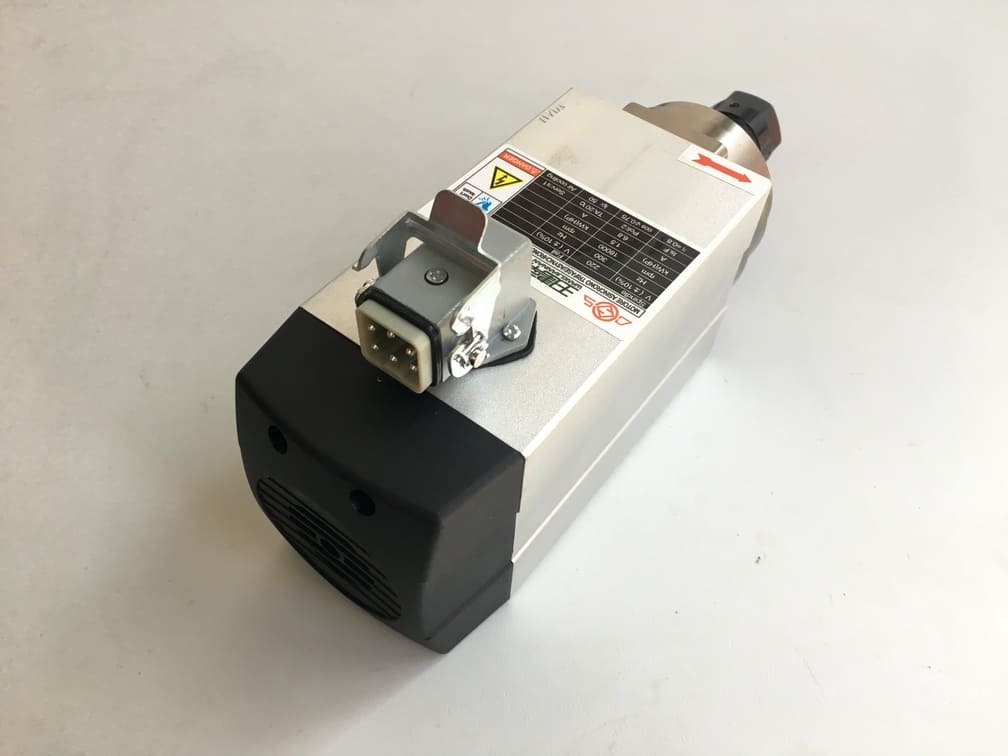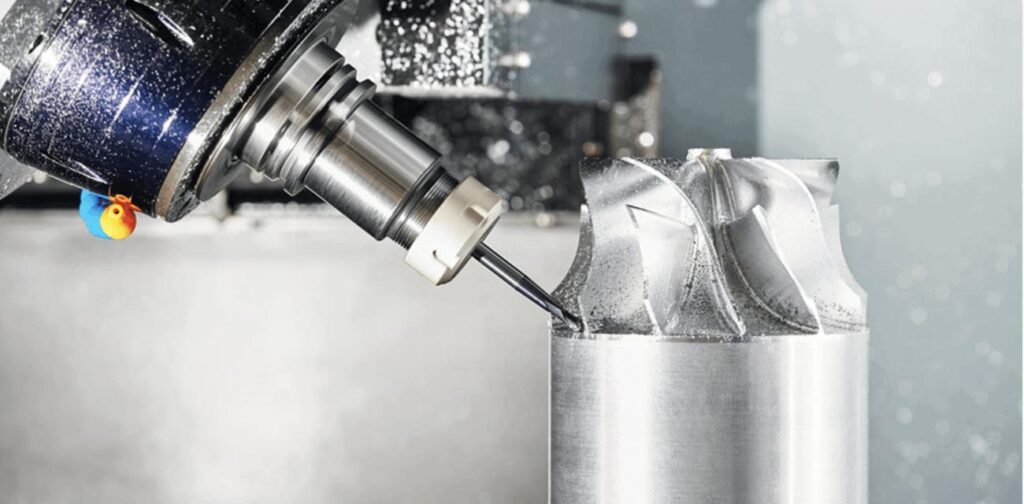Introduction
Using a CNC spindle motor for a wind turbine is an exciting concept for DIY enthusiasts interested in renewable energy. With the rise of at-home renewable projects, particularly wind turbines, people are exploring the potential of CNC router spindle motors for electricity generation. In this article, we’ll delve into the possibilities, challenges, and benefits of converting CNC spindles for wind turbine use, helping readers understand why it might be a practical and engaging DIY project.
Understanding CNC Spindle Motors
A CNC spindle motor is a high-precision tool used in CNC machines to control the speed and direction of rotating parts like CNC routers and engravers. Spindles convert electrical energy into rotational mechanical energy, making them ideal for high-speed tasks like cutting, drilling, and engraving. But can this powerful motor be harnessed to generate electrical energy for a wind turbine?
While spindle motors are designed for creating mechanical motion, their efficiency and durability make them an intriguing candidate for generating power in wind turbine projects. Many DIY enthusiasts are drawn to the challenge of converting this spindle CNC motor into an energy-generating tool.
The Basics of CNC Spindle Motors
What Is a CNC Spindle Motor?
A CNC spindle motor typically operates at speeds ranging from 8,000 to 24,000 RPM, providing the torque and power necessary to run tools for milling, engraving, and cutting. These motors are capable of handling long periods of high-speed operation, which is why they’re popular in industries that require precision and reliability.
These motors come in several types, including air-cooling CNC spindle motors and water-cooling CNC spindle motors, both of which have their advantages depending on the use case. For a wind turbine project, choosing the right type of motor is essential.

Air-Cooling vs. Water-Cooling Spindles: Which is Better?
Can an Air-Cooling Spindle Be Used in a Wind Turbine?
Air-cooling spindle motors are simpler in design and use built-in fans to keep the motor from overheating. For a DIY wind turbine project, an air-cooling CNC router spindle motor is ideal because it doesn’t require any external equipment for cooling, making it easier to maintain and more convenient for outdoor use.
However, water-cooling systems, which circulate water through the spindle, offer superior cooling for extended periods of operation, though they may be less practical for a small-scale wind turbine project due to the need for additional parts and maintenance.
Can You Convert a CNC Spindle Motor for Wind Turbine Use?
How Feasible Is the Conversion Process?
It is indeed possible to convert a spindle for CNC into a generator for wind turbines, but it requires technical knowledge and some adjustments. In most cases, you will need to modify the wiring of the CNC spindle motor to allow it to generate electricity rather than consume it. Additionally, you may need a rectifier to convert the generated AC power into DC, which is more suitable for storage in batteries or direct use.
A CNC spindle’s ability to generate electrical energy depends on the wind’s speed and the spindle’s RPM, but it’s an exciting way to repurpose a tool originally designed for precision machining into a small wind power generator.
Key Considerations for Integration
When converting a CNC router spindle motor for wind turbine use, there are several important considerations to keep in mind:
- Voltage Output: The power output will vary depending on the wind speed and motor RPM. A charge controller is often necessary to regulate this output.
- Mounting and Protection: Ensuring that the motor is properly mounted and protected from the elements is crucial for long-term reliability.
- Blade Design: Wind turbine blades must be designed to match the spindle’s capabilities, allowing for efficient energy capture.
Step-by-Step Guide to Building Your Wind Turbine
How Can You Build Your Own Wind Turbine?
- Choose Your Spindle: Select a CNC router spindle or spindle CNC motor with an appropriate RPM range for generating electricity at varying wind speeds.
- Modify the Wiring: Reconfigure the spindle’s wiring to allow it to function as a generator. This may involve connecting the spindle to a rectifier for DC power conversion.
- Build or Buy Blades: Create or purchase turbine blades optimized for the motor’s RPM and torque.
- Test and Optimize: Before setting up your turbine, conduct tests to ensure the motor generates the desired voltage under different wind conditions.
What Tools and Materials Do You Need?
Building a DIY wind turbine with a CNC spindle requires a few key tools and materials, including:
- CNC spindle motor (air-cooling or water-cooling)
- Rectifier (to convert AC to DC)
- Wind turbine blades (custom-made or purchased)
- Charge controller
- Mounting system
- Multimeter (for measuring voltage output)
How to Ensure Efficient Energy Conversion
What Are the Key Factors for Maximizing Efficiency?
To ensure your wind turbine operates efficiently, match the spindle motor’s RPM with the wind conditions in your location. High RPMs are ideal for strong winds, but a multi-spindle CNC machine might offer insights into balancing speed and torque. Blade design and positioning also play critical roles in energy capture. Ensuring the blades are aligned properly with the wind direction can help maximize output.
How to Handle Voltage and Current Variations
Wind speeds fluctuate, causing variations in the voltage and current generated by your spindle motor. A charge controller is critical to prevent overcharging batteries or damaging the system. A voltage regulator can also help stabilize the output, providing a more consistent source of electricity, especially during windy periods.
Common Pitfalls to Avoid in Your Wind Turbine Project
What Are the Most Common Mistakes?
Some common errors to avoid when using a spindle CNC motor for a wind turbine include:
- Incorrect Motor Selection: Not all CNC spindles are suitable for wind turbines, so ensure you choose one that can handle variable RPMs.
- Improper Cooling: Even at lower speeds, overheating can be an issue. Make sure the spindle’s cooling system is functional, especially in hot environments.
- Inadequate Blade Design: Poorly designed blades reduce efficiency. Use aerodynamic designs tailored to your spindle’s capabilities.
Frequently Asked Questions
Can any CNC spindle motor be used for wind turbine projects?
No, not all CNC spindle motors are suitable. Some may lack the necessary RPM range or durability for continuous wind turbine operation.
What are the benefits of using an air-cooling CNC spindle motor?
Air-cooling CNC spindle motors are easier to maintain and do not require additional components like pumps or radiators, making them more user-friendly for DIY wind turbine projects.
How much voltage can a typical CNC spindle motor generate as a wind turbine?
The voltage generated depends on the RPM and wind conditions. Under optimal conditions, a small DIY turbine could generate anywhere from 12V to 48V of DC power.
Are there any legal considerations when converting a CNC spindle motor into a wind turbine?
Yes, it’s important to check local regulations regarding wind turbines, as some areas may have restrictions on turbine height or placement due to safety or noise concerns.
Where can I find more resources on DIY wind turbine projects with CNC spindle motors?
There are numerous online communities and forums dedicated to DIY renewable energy projects, where experienced users share their designs, tips, and modifications.

Ensuring Efficient Energy Conversion
How to Maximize Efficiency in DIY Wind Turbines?
The efficiency of a DIY wind turbine largely depends on matching the spindle motor’s RPM with the optimal wind speed. Using a multi-spindle CNC machine can provide insights into maintaining balance and ensuring smooth rotation. Additionally, optimizing the blade design and selecting the right location with consistent wind speeds can dramatically increase the efficiency of the turbine.
Dealing with Voltage and Current Variations
How Do You Handle Voltage Fluctuations in a DIY Wind Turbine?
The power output of a spindle motor for CNC wind turbine will fluctuate based on wind speed. This can lead to inconsistent voltage levels. A charge controller is essential in managing these variations, ensuring the battery is not overcharged and the system remains safe. Some DIY enthusiasts also use voltage regulators to maintain steady power output.
Common Pitfalls to Avoid
What Are the Most Common Mistakes in DIY Wind Turbine Projects?
- Choosing the wrong spindle motor: Not all spindle motors CNC are suitable for wind turbines. Ensure the motor you select can handle variable RPMs.
- Ignoring cooling requirements: Even though wind turbines operate at lower RPMs than CNC machines, cooling is still necessary to prevent the spindle from overheating.
- Poor blade design: The efficiency of a wind turbine relies heavily on the blade design. Avoid using generic blades without optimizing them for your specific setup.
Future of CNC Spindle Motors in Renewable Energy
As the global demand for renewable energy solutions increases, the use of CNC spindle motors in small-scale energy projects could become more common. Innovations in spindle CNC technology, such as higher efficiency motors and built-in power generation capabilities, could see more DIY and even commercial wind turbine applications in the future.

- RicoCNC has a team of professionals who have been engaged in the design, production, sales, and maintenance of electro spindles for many years. Our company accepts the purchase of various types of CNC spindles.
water-cooled CNC spindle motors
Edge banding machine spindle motors.
- If you need any CNC spindle, please contact us.

